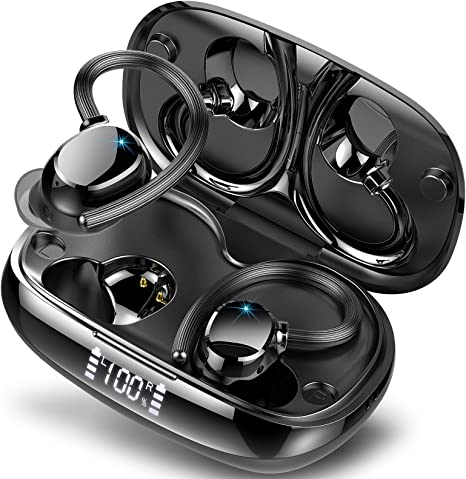The Current Within: A Practical Guide to E-Bike Battery Safety, Longevity, and Real-World Range
Update on Oct. 11, 2025, 4:50 p.m.
It is the single most expensive and vital component of your electric bicycle. It’s the fuel tank, the engine’s lifeblood, and the source of its power. It is also, for many, a source of anxiety. The lithium-ion battery pack, often a sleek black box locked onto the frame, is a marvel of modern chemistry, but headlines about e-bike fires have understandably created concern. The truth is, a well-made, properly maintained battery is remarkably safe. The danger lies not in the technology itself, but in a lack of understanding.
This guide is designed to replace anxiety with knowledge. Using a typical modern battery—such as the 48V, 374.4Wh, IPX5-rated unit on the Funhang EB-M1—as our example, we will unpack what’s inside, how to care for it, and what its specifications really mean for your ride.

Inside the Black Box: Cells, BMS, and Watt-Hours
An e-bike battery isn’t one single unit. It’s a carefully engineered system consisting of three key parts:
1. The Cells: These are dozens of smaller, individual lithium-ion cells, similar to oversized AA batteries, connected in series and parallel to achieve the desired voltage and capacity.
2. The Battery Management System (BMS): This is the battery’s brain. It’s a small circuit board that is critically important for safety. It constantly monitors the state of every cell, protecting them from over-charging, over-discharging, overheating, and short circuits. A quality BMS is the number one defense against battery failure.
3. The Casing: This provides physical protection from impacts and the elements.
The key number on your battery is its capacity, measured in watt-hours (Wh). Think of it as the size of your “gas tank.” The 374.4Wh capacity on our example battery means it can deliver 374.4 watts of power for one hour, or 187.2 watts for two hours, and so on. This is the single most important metric for estimating your potential range. A manufacturer’s claim of “up to 50 miles” is an optimistic best-case scenario. Your real-world range will always be less, determined by your weight, the terrain, wind, tire pressure, and how much you rely on the motor.
The Safety Imperative: Preventing Thermal Runaway
News reports of e-bike fires are almost always referring to a dangerous event called “thermal runaway.” This is a chain reaction where a damaged or faulty cell overheats, causing adjacent cells to overheat, leading to a fire that is very difficult to extinguish. According to the U.S. Consumer Product Safety Commission (CPSC), a significant number of these incidents are linked to uncertified batteries and chargers.
The key to prevention is twofold: quality manufacturing and proper care. When buying an e-bike or battery, look for certification from Underwriters Laboratories (UL), specifically UL 2849 for the entire e-bike system and UL 2271 for the battery itself. This independent testing ensures the battery and its BMS have met rigorous safety standards. Secondly, how you treat your battery matters immensely.
The Actionable Asset: Your E-Bike Battery Safety Checklist
Treat your battery with the same respect you would any powerful electronic device. Follow these steps to maximize its safety and lifespan.
| Area | Action | Why It’s Important |
|---|---|---|
| Charging | Use ONLY the manufacturer-supplied charger. | Mismatched chargers can have the wrong voltage or current, damaging the BMS and cells, creating a fire risk. |
| Charge on a hard, non-flammable surface away from flammable materials. | Never charge on a bed, sofa, or near curtains. This prevents a potential failure from spreading. | |
| Don’t leave it charging unattended for extended periods (e.g., overnight). | Unplug the charger once the battery is full. This reduces stress on the cells. | |
| Never charge a battery that is damaged or has been in a crash. | Physical damage can compromise internal safety features. Have it inspected by a professional. | |
| Storage | Store the battery in a cool, dry place. | Avoid extreme temperatures (hot or cold), which degrade battery health. Never leave it in a car on a hot day. |
| For long-term storage (1+ month), store it at 40-60% charge. | Storing a Li-ion battery at 100% or 0% for long periods accelerates degradation. | |
| Inspection | Regularly inspect the battery casing for cracks, swelling, or leaking. | Any of these signs indicate an internal failure. Stop using the battery immediately and dispose of it properly. |
| Keep the battery and its contacts clean and dry. | Prevents short circuits and ensures a good connection to the bike. |

Decoding “Waterproof”: What IPX5 Really Means
Many e-bikes advertise some level of water resistance. The battery on our example unit is rated IPX5. This is a specific rating from the International Electrotechnical Commission’s standard (IEC 60529).
- IP stands for Ingress Protection.
- The first digit (if present) rates protection against solids (dust). An ‘X’ means it wasn’t tested for this.
- The second digit rates protection against liquids.
IPX5 means the casing is protected against low-pressure water jets from any direction.
- What it means for you: Riding in the rain is fine. Getting caught in a downpour is okay.
- What it does NOT mean: The bike is not waterproof or submersible. You should never use a pressure washer or a strong jet of water to clean your e-bike or its battery. This can force water past the seals and damage the sensitive electronics within.
Conclusion: Knowledge is Power
Your e-bike battery is a dense store of energy that deserves your respect, not your fear. By purchasing certified equipment, understanding what its specifications mean, and adopting a few simple habits for charging and care, you can ensure a safe and long-lasting relationship with your electric steed. An empowered rider is a safe rider, and the knowledge to properly care for the current within your bike is the most important accessory you can have.



















